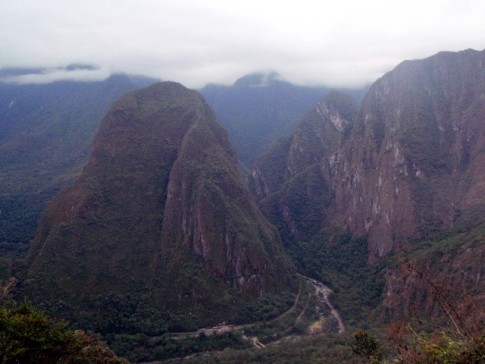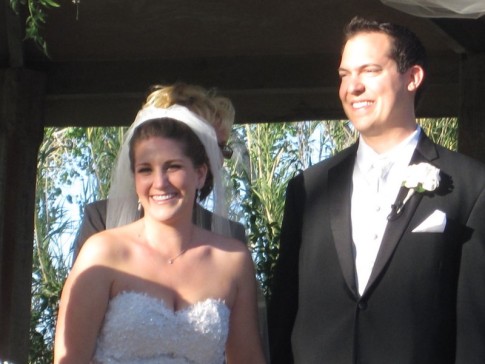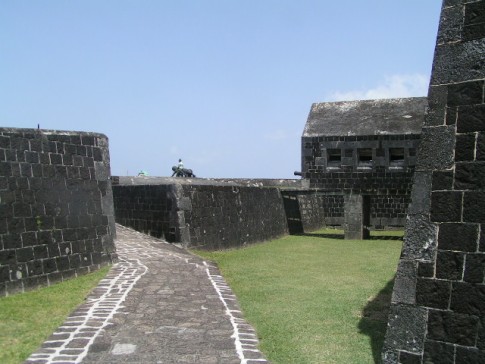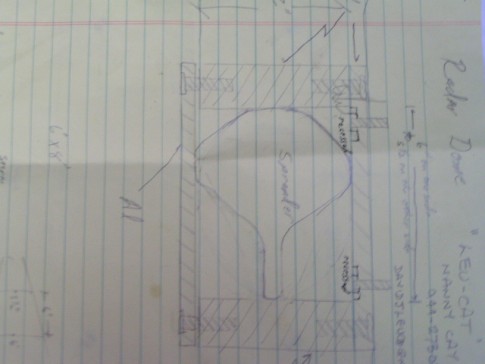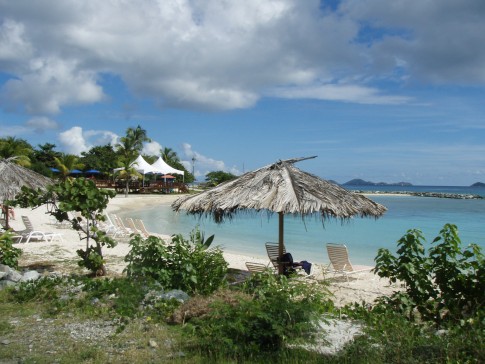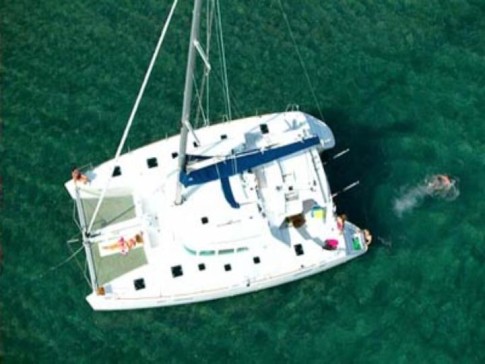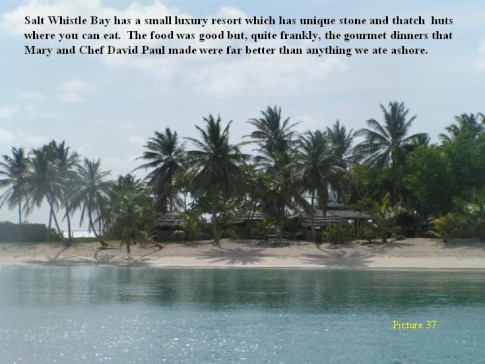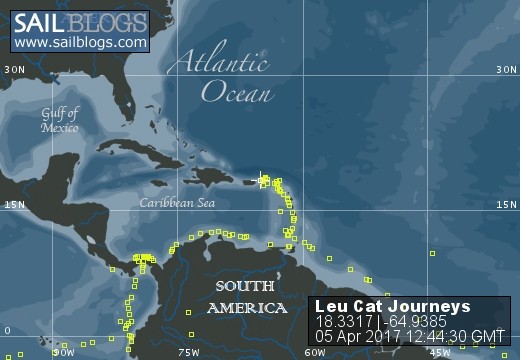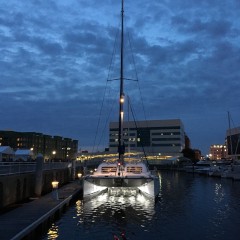
LeuCat Adventures
Join us in sharing our adventures as we sail around the world. NEW!!************************************************************************* GET A COPY OF OUR TECHNO-TIPS DOCUMENTS--JUST CLICK ON THEM UNDER THE "FAVORITES" HEADING ON THE RIGHT
24 September 2017
30 August 2017 | San Francisco, CA
07 July 2017
02 July 2017 | Simpson Bay Marina, Cole Bay, Sint Maarten
01 July 2017 | Simpson Bay Marina, Cole Bay, Sint Maarten
30 June 2017 | Simpson Bay Marina, Cole Bay, Sint Maarten
29 June 2017 | Simpson Bay Marina, Cole Bay, Sint Maarten
28 June 2017 | Simpson Bay Marina, Cole Bay, Sint Maarten
27 June 2017 | Simpson Bay Marina, Cole Bay, Sint Maarten
26 June 2017 | Simpson Bay Marina, Cole Bay, Sint Maarten
25 June 2017 | Simpson Bay Marina, Cole Bay, Sint Maarten
24 June 2017
24 June 2017 | Simpson Bay Marina, Cole Bay, Sint Maarten
22 June 2017 | Simpson Bay Marina, Cole Bay, Sint Maarten
21 June 2017 | Simpson Bay Marina, Cole Bay, Sint Maarten
20 June 2017 | Simpson Bay Marina, Cole Bay, Sint Maarten
18 June 2017 | Simpson Bay Marina, Cole Bay, Sint Maarten
17 June 2017 | Simpson Bay Marina, Cole Bay, Sint Maarten
16 June 2017 | Simpson Bay Marina, Cole Bay, Sint Maarten
15 June 2017 | Simpson Bay Marina, Cole Bay, Sint Maarten
Year 5 Day 43 - Melbourne Day 3: Fairy Penguins
14 March 2012 | Melbourne, AU
Dave/Mostly Sunny And Warm (31 degrees)
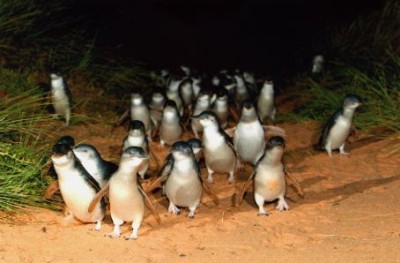
Today was our day to take a tour of the coastal countryside and Phillips Island. We had decided to take a tour bus, which is very unusual for us. We usually just rent a car and go exploring armed with lots of maps, local information downloaded from the Internet or obtained from the local information center. However, since our stay in Melbourne is so short, we decided to just be tourists and take the tour bus.
The tour bus picked us up at 1045 just across the street from our hotel. We spent the next half hour driving around Melbourne’s city center picking up the other passengers. All told, there were 23 of us. Our driver and tour guide was Craig and he was great. As he drove, he passed on various historical tid-bits, cultural information, and wildlife facts.
Our first stop was a park just outside of Melbourne. Here there were nests of over 20,000 flying foxes (aka fruit bats: Pteropus poliocephalus). These bats are huge with a wing span that looked to be over 4 feet! They are covered with fur and have faces that look like foxes. They have been dated back 35 million years by analysis of fossil remains and these remains show that the flying foxes are virtually unchanged during this time span.
We have seen flying foxes before in a number of places as we crossed the South Pacific. Specifically, we have seen them in American Samoa, Tonga and Fiji. However, at this park we were able to see them very well since they were hanging upside down in Eucalyptus trees. The leaves of these trees were not dense so we had great views of the bats. I will post a couple of the photos I took so you can see what I mean.
As it turns out, these bats have become a real nuisance to the local farming community since the colony is rapidly growing and last year they ate over 60 tons of cherries. Unlike other bats, flying foxes have very keen eye sight and smelling capabilities and depend of these senses to locate their food. They only eat fruit and flowers and suck nectar. They play a strong role in pollination since the pollen sticks to their fur as they forage.
After stopping to see the flying foxes we made our way toward the coast next stopping at an animal rescue center which has kangaroos, wallabies, emus, koalas, dingoes, goats, a llama and donkeys. We got to feed and pet the wallabies (related to the kangaroo but are a lot smaller) and Kangaroos and feed the emus.
The emus tuned out to be very aggressive and the “Big Daddy” of the flock snuck up behind me when we were feeding the others and then hissed loudly at me and viciously bit my shirt sleeve. I about jumped out of my pants when that happened. “Big Daddy” then thrust his face and angry beak into my face and demanded that I stop feeding the others and just feed him. We were eyeball to eyeball and boy, did he look mean! Both Mary Margaret and I backed away and left “Big Daddy” just standing there as we high-tailed it out of there!!!
I will post a few of the pictures that we took while at this rescue center above this blog.
The penguins were our tour’s featured stop but since they do not come ashore until after dark, we spent the bulk of the day making our way toward and around Phillips Island and stopping at various places. I will post photos of some of our most enjoyable stops above this blog.
A dinner of pizzas was provided with the tour and as we waited for dusk to arrive, we sat and enjoyed our pizza on the foreshore of Phillips Island overlooking the bay. It was very nice.
After dinner, we went to the penguin nature center area and drove out to a place that overlooks the Nobbies, which are a series of large rock outcroppings in the ocean that is the home of about 20,000 fur seals. Here we had the added bonus of seeing a number of penguins that were either juveniles or adults that were molting. This is molting season for the fairy penguins and it take about 2 weeks for a penguin to lose last season’s feathers and then have this season’s feathers come in. Their feathers are what protect them from losing their body’s heat. Thus, while they molt off their old feathers and grow in new ones they stay in and near their burrows to keep warm.
The fairy penguin is also known as the blue penguin, which we saw in New Zealand last year. They are the smallest of all of the species of penguins and only grow to about a foot in height. They mate for life and the male makes the nest by burrowing into the vegetated portion of sand dunes. The female lays two eggs and they take turns sitting on the eggs until they hatch. As one sits on the eggs, the other will spend up to two days in the ocean eating.
Once the eggs hatch, they both then return to the water during the daytime to feed. As the dusk turns to night, the parents wait just outside the surf zone for other parents to return. In this manner they form rafts of penguins waiting for it to get dark. Once it is dark enough, the raft of penguins swims to shore and stand together as a huddled mass on the wet sand for minutes looking at the rest of the beach and the foreshore area. They are looking for their natural enemies which include snakes, foxes, sea eagles, and other creatures that would like to make them into dinner.
When they think it is safe, they all scamper together across the beach and then head up the dunes and foreshore areas looking for they burrows and their young. In the process they chirp out a song calling for their young. When the young hear their parent’s chirps, they in return chirp all excited knowing that food and love are coming their way. It is so cute to hear and see up close.
To watch the rafting process and then the return of the parents to their young, we drove over to the viewing area and sat and watched this “penguin parade”. The penguins are used to having hundreds of people watch them do their thing and they walk right by you on their return to their nests. We are required to stand on a long boardwalk, which is raised about a foot off the ground but you can stand on the edge of the boardwalk and the penguins walk right by and under you. It was really something special to experience. While we were able to photograph the penguins outside of the viewing area, we were not allowed to take pictures of the penguins inside the viewing area. This is because it is dark and flash photography would disorient the penguins. However, I will post the photos that I was allowed to take and will grab some photos of the “penguin parade” off of the Internet to show you what we saw.
Once we left the penguins it was a long two hour bus ride back to our hotel and we did not arrive until after 2330. Thus, we will most likely just relax tomorrow as we pack up to leave for Tasmania on the 16th.
The tour bus picked us up at 1045 just across the street from our hotel. We spent the next half hour driving around Melbourne’s city center picking up the other passengers. All told, there were 23 of us. Our driver and tour guide was Craig and he was great. As he drove, he passed on various historical tid-bits, cultural information, and wildlife facts.
Our first stop was a park just outside of Melbourne. Here there were nests of over 20,000 flying foxes (aka fruit bats: Pteropus poliocephalus). These bats are huge with a wing span that looked to be over 4 feet! They are covered with fur and have faces that look like foxes. They have been dated back 35 million years by analysis of fossil remains and these remains show that the flying foxes are virtually unchanged during this time span.
We have seen flying foxes before in a number of places as we crossed the South Pacific. Specifically, we have seen them in American Samoa, Tonga and Fiji. However, at this park we were able to see them very well since they were hanging upside down in Eucalyptus trees. The leaves of these trees were not dense so we had great views of the bats. I will post a couple of the photos I took so you can see what I mean.
As it turns out, these bats have become a real nuisance to the local farming community since the colony is rapidly growing and last year they ate over 60 tons of cherries. Unlike other bats, flying foxes have very keen eye sight and smelling capabilities and depend of these senses to locate their food. They only eat fruit and flowers and suck nectar. They play a strong role in pollination since the pollen sticks to their fur as they forage.
After stopping to see the flying foxes we made our way toward the coast next stopping at an animal rescue center which has kangaroos, wallabies, emus, koalas, dingoes, goats, a llama and donkeys. We got to feed and pet the wallabies (related to the kangaroo but are a lot smaller) and Kangaroos and feed the emus.
The emus tuned out to be very aggressive and the “Big Daddy” of the flock snuck up behind me when we were feeding the others and then hissed loudly at me and viciously bit my shirt sleeve. I about jumped out of my pants when that happened. “Big Daddy” then thrust his face and angry beak into my face and demanded that I stop feeding the others and just feed him. We were eyeball to eyeball and boy, did he look mean! Both Mary Margaret and I backed away and left “Big Daddy” just standing there as we high-tailed it out of there!!!
I will post a few of the pictures that we took while at this rescue center above this blog.
The penguins were our tour’s featured stop but since they do not come ashore until after dark, we spent the bulk of the day making our way toward and around Phillips Island and stopping at various places. I will post photos of some of our most enjoyable stops above this blog.
A dinner of pizzas was provided with the tour and as we waited for dusk to arrive, we sat and enjoyed our pizza on the foreshore of Phillips Island overlooking the bay. It was very nice.
After dinner, we went to the penguin nature center area and drove out to a place that overlooks the Nobbies, which are a series of large rock outcroppings in the ocean that is the home of about 20,000 fur seals. Here we had the added bonus of seeing a number of penguins that were either juveniles or adults that were molting. This is molting season for the fairy penguins and it take about 2 weeks for a penguin to lose last season’s feathers and then have this season’s feathers come in. Their feathers are what protect them from losing their body’s heat. Thus, while they molt off their old feathers and grow in new ones they stay in and near their burrows to keep warm.
The fairy penguin is also known as the blue penguin, which we saw in New Zealand last year. They are the smallest of all of the species of penguins and only grow to about a foot in height. They mate for life and the male makes the nest by burrowing into the vegetated portion of sand dunes. The female lays two eggs and they take turns sitting on the eggs until they hatch. As one sits on the eggs, the other will spend up to two days in the ocean eating.
Once the eggs hatch, they both then return to the water during the daytime to feed. As the dusk turns to night, the parents wait just outside the surf zone for other parents to return. In this manner they form rafts of penguins waiting for it to get dark. Once it is dark enough, the raft of penguins swims to shore and stand together as a huddled mass on the wet sand for minutes looking at the rest of the beach and the foreshore area. They are looking for their natural enemies which include snakes, foxes, sea eagles, and other creatures that would like to make them into dinner.
When they think it is safe, they all scamper together across the beach and then head up the dunes and foreshore areas looking for they burrows and their young. In the process they chirp out a song calling for their young. When the young hear their parent’s chirps, they in return chirp all excited knowing that food and love are coming their way. It is so cute to hear and see up close.
To watch the rafting process and then the return of the parents to their young, we drove over to the viewing area and sat and watched this “penguin parade”. The penguins are used to having hundreds of people watch them do their thing and they walk right by you on their return to their nests. We are required to stand on a long boardwalk, which is raised about a foot off the ground but you can stand on the edge of the boardwalk and the penguins walk right by and under you. It was really something special to experience. While we were able to photograph the penguins outside of the viewing area, we were not allowed to take pictures of the penguins inside the viewing area. This is because it is dark and flash photography would disorient the penguins. However, I will post the photos that I was allowed to take and will grab some photos of the “penguin parade” off of the Internet to show you what we saw.
Once we left the penguins it was a long two hour bus ride back to our hotel and we did not arrive until after 2330. Thus, we will most likely just relax tomorrow as we pack up to leave for Tasmania on the 16th.
Comments
| Vessel Name: | Leu Cat |
| Vessel Make/Model: | Lagoon 440 |
| Hailing Port: | Dana Point, CA |
| Crew: | Mary Margaret and Dave Leu |
| About: | Our goals are to spend the next 10 to 15 years cruising around the world and sharing this adventure with family and friends. |
| Extra: | S/V Leu Cat is Lagoon 440 rigged for blue water sailing. It is 44 feet long with a 25 foot beam |
| Social: |
Leu Cat's Photos - (Main)
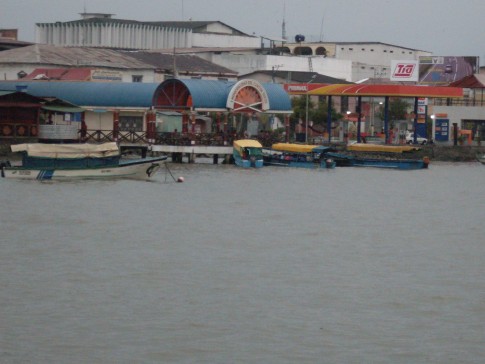 |
Here are some pics that I took while visiting w/ my parents in the Galapagos Islands
22 Photos
Created 29 March 2010
|
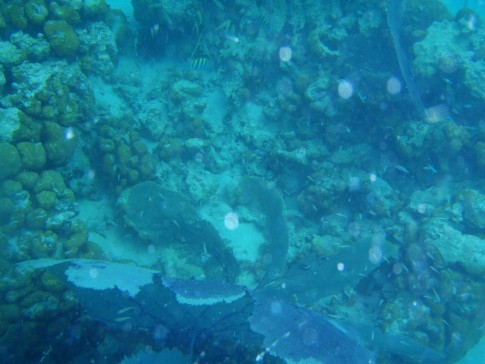 |
Pictures of the sea life in the cut between Little Jost Van Dyke and Green Cay, BVI
30 Photos
Created 17 March 2008
|
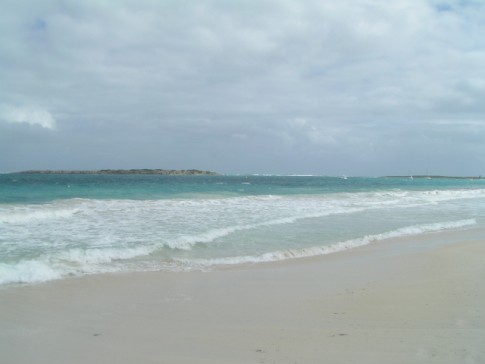 |
Here are a number of pictures of St. Maarten and the places we visited
36 Photos
Created 21 January 2008
|
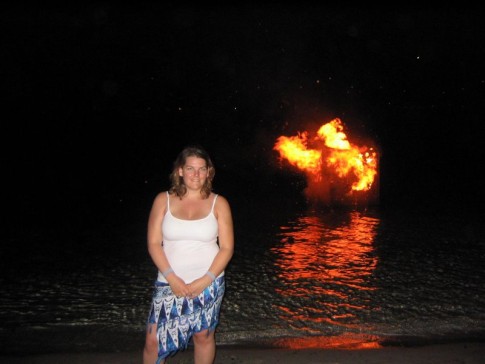 |
Join us as we explore the Spanish, American, and British Virgin Ilsands.
15 Photos
Created 20 October 2007
|
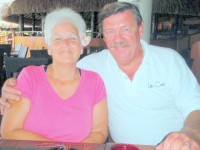
Who: Mary Margaret and Dave Leu
Port: Dana Point, CA
Table of Contents
Favorites
- Get A Copy Of Our Techno Tips Document
- Galley Tips For Cruisers
- Land Travel Tips For Cruisers
- Get A Copy Of Our Yanmar Drive Cone Repair Manual
- Updated Pirate Report
- My Bother Don's and Debbie's Blog
- A Great Sailing Blog
- A remarkable Sail Blog
- Celestial Navigation
- Here is Another Great Sailing Blog
- S/V Totem's Sail Blog
- S/V Infini's Blog Site


